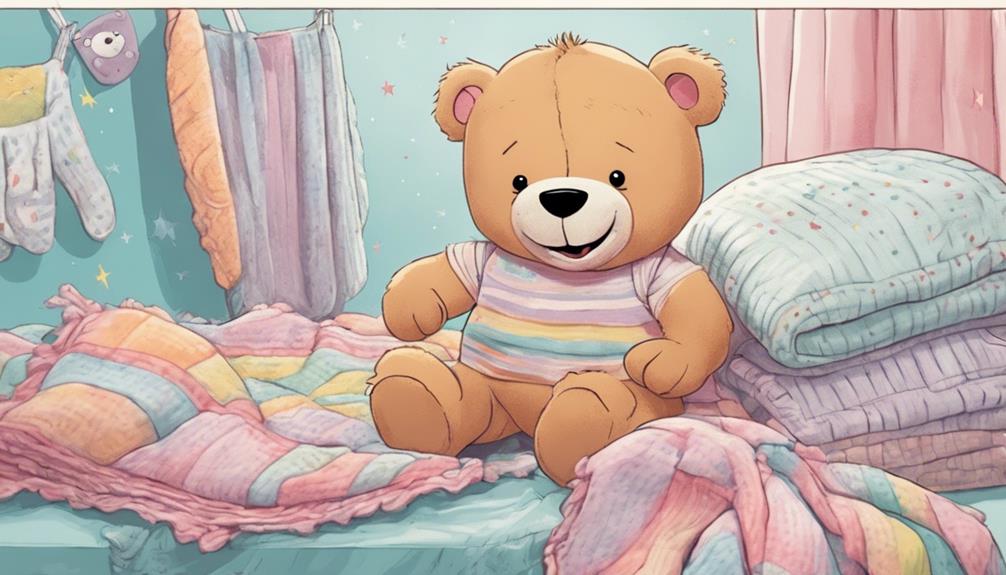If your child is brushing their teeth all wrong, you’ll notice a few key signs. First, if food particles remain after brushing, it’s a red flag. Second, check their toothbrush: worn or frayed bristles indicate improper technique. If their mouth doesn’t feel squeaky clean afterward, they may not be brushing long enough. Also, a white tongue often signals bacteria buildup from neglect. Finally, if your child has persistent bad breath or frequent cavities, their brushing habits need urgent attention. Want to uncover more insights on improving their dental routine? Explore the ways to guarantee effective brushing next. Understanding the baby teeth eruption timeline can also be crucial in improving your child’s dental routine. It’s important to know when their baby teeth are expected to come in so you can start proper brushing habits from the get-go. Encouraging good oral hygiene early on can set the foundation for a lifetime of healthy teeth and gums. Additionally, consulting with a pediatric dentist can provide valuable guidance on how to effectively care for your child’s teeth at each stage of development.
Key Takeaways
- Worn or frayed bristles on their toothbrush indicate excessive pressure or improper brushing technique.
- Food particles remain trapped between teeth after brushing, suggesting inadequate cleaning.
- A white tongue or persistent bad breath may signal neglect in brushing or bacteria buildup.
- Gum soreness or bleeding during brushing could indicate poor technique or gingivitis.
Quick Brushing Habits
When your child rushes through brushing, it can lead to missed spots and dental problems down the line. Quick brushing habits often result in inadequate cleaning, leaving food particles trapped between teeth. This can contribute to tooth decay and other dental health issues. It’s essential to emphasize the importance of brushing thoroughly to help your child develop good oral hygiene habits.
Many parents overlook common mistakes, like not setting a timer or using a fun two-minute song to encourage proper brushing duration. Children should brush for at least two minutes to guarantee they adequately clean all surfaces of their teeth. When they rush, they may not remove plaque effectively, increasing the likelihood of cavities.
To reinforce good habits, consider regular reminders or interactive brushing activities that make the process enjoyable. Let your child understand that brushing isn’t just a chore; it’s a significant part of maintaining their dental health.

Toothbrush Condition
Your child’s toothbrush condition can reveal a lot about their brushing habits and overall oral hygiene.
If the bristles are worn or flat after just a few weeks, it often indicates they’re applying excessive pressure while brushing. This not only damages the toothbrush but can also harm tooth enamel. Regularly checking the toothbrush can help you spot signs of over-brushing, like frayed or bent bristles, suggesting an improper brushing technique.
A toothbrush that appears dry and unused might mean your child isn’t brushing on a regular basis, which raises concerns about their oral hygiene routine. Discolored bristles or those with food debris stuck in them signal inadequate cleaning and that food particles are likely being missed.
It’s essential to replace the toothbrush every 3-4 months. Worn bristles hinder effective cleaning, allowing plaque and bacteria to thrive in your child’s mouth.
Oral Hygiene Indicators
Regularly checking oral hygiene indicators can help you identify if your child is brushing their teeth effectively.
One of the first signs to look for is a squeaky clean sound when you run a finger over their teeth; if you don’t hear it, food particles may still be lurking.

Also, pay attention to your child’s tongue—if it’s white, that could signal bacteria buildup from inadequate brushing.
Another important indicator is the presence of food particles stuck between teeth after brushing. This suggests your child may need to improve their tooth brushing techniques or spend more time on this essential task.
A dry toothbrush can also be a red flag, indicating your child mightn’t be brushing as often as necessary for good dental health.
Flossing Awareness
Flossing is a fundamental part of dental care that often gets overlooked, yet it plays a significant role in keeping your child’s teeth healthy. It’s important to start flossing as soon as your child has two teeth that touch, typically around ages 2-3. This practice helps remove plaque and food particles between teeth that brushing alone can’t reach, which is essential for your child’s oral health.
When monitoring your child’s flossing habits, check the bathroom waste to see if they’re using an appropriate amount of floss. If you notice it’s barely touched, it might be time to step in. Flossing together as a family can make it more engaging and reinforce its significance in dental care.

Ensure your child understands the correct technique—using a gentle sawing motion and curving the floss around each tooth. This method effectively cleans while protecting their gums.
Pairing flossing with brushing and using a toothbrush with soft bristles helps keep their teeth and gums healthy. By fostering good habits early on, you’re setting the foundation for a lifetime of healthy smiles.
Signs of Dental Issues
Frequent cavities in children often signal that they’re not brushing effectively, leading to plaque buildup and decay. If your child’s teeth and gums show signs of distress, it’s vital to pay attention. For instance, if you notice your child brushes but still has food particles stuck between their teeth, it’s a clear indication that they’re not cleaning thoroughly.
Persistent bad breath can also be a sign that your child isn’t practicing good dental hygiene. This often results from the accumulation of bacteria in their mouth. Additionally, a white tongue may indicate a buildup of bacteria, especially if they neglect to brush their tongue properly.

If your child experiences gum soreness or bleeding while brushing, this could be a sign of gingivitis or improper brushing technique. It’s important to address these symptoms early to prevent further dental complications.
Encourage your child to brush with the right technique using a toothbrush that effectively reaches all areas of their mouth. By monitoring these signs and instilling good habits, you can help guarantee your child maintains a healthy smile and avoids more serious dental issues down the line.
Frequently Asked Questions
What Happens When Kids Don’t Brush Their Teeth Properly?
When kids don’t brush their teeth properly, plaque builds up, leading to cavities and gum disease. They can also develop bad breath, tooth sensitivity, and discoloration, requiring costly dental treatments if ignored. Regular brushing’s essential!
How to Tell if Someone Isn’t Brushing Their Teeth?
If you notice a dry toothbrush, visible food particles, a white tongue, persistent bad breath, or frayed bristles, it’s likely that someone isn’t brushing their teeth properly and needs to improve their oral hygiene routine.
How Do You Know if You’re Brushing Your Teeth Wrong?
Think of your toothbrush like a dance partner; if you’re pushing too hard, you’ll step on toes. If your bristles wear quickly, gums bleed, or food lingers, you might be brushing too aggressively or ineffectively.
Does Autism Affect Brushing Teeth?
Yes, autism can affect tooth brushing. Sensory sensitivities, motor skill challenges, and repetitive behaviors may make it hard for you to establish a consistent routine. Positive reinforcement and visual aids can help improve your experience.
What are the signs that my child may be brushing their teeth incorrectly?
Signs that your child may be brushing their teeth incorrectly include leaving behind food particles, not spending at least two minutes brushing, and brushing too hard. These are all reasons to avoid postbreakfast brushing, as it can damage enamel softened by acidic foods.
Conclusion
In summary, keeping an eye on your child’s brushing habits is essential.
Did you know that nearly 40% of kids don’t brush for the recommended two minutes? That’s a lot of missed time for effective cleaning!

By being aware of their toothbrush condition, oral hygiene indicators, and flossing habits, you can guide them toward better dental health.
Address any signs of dental issues early, and help them establish a routine that keeps their smile bright and healthy.









